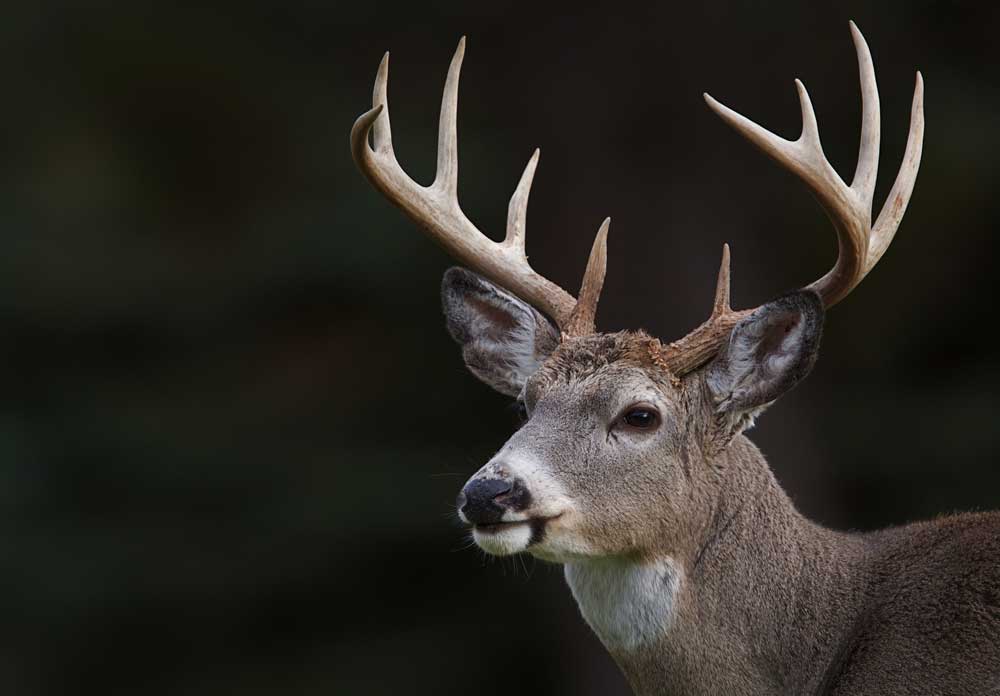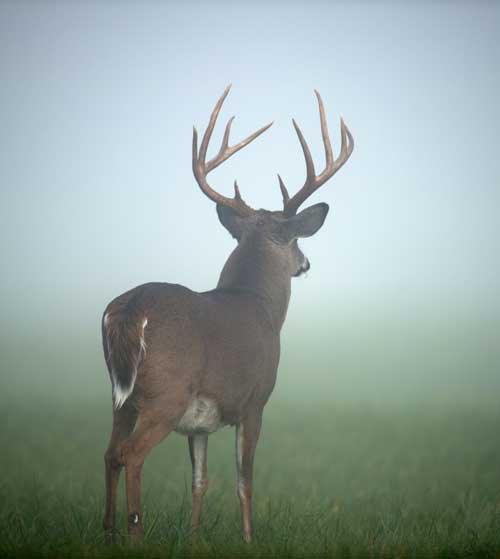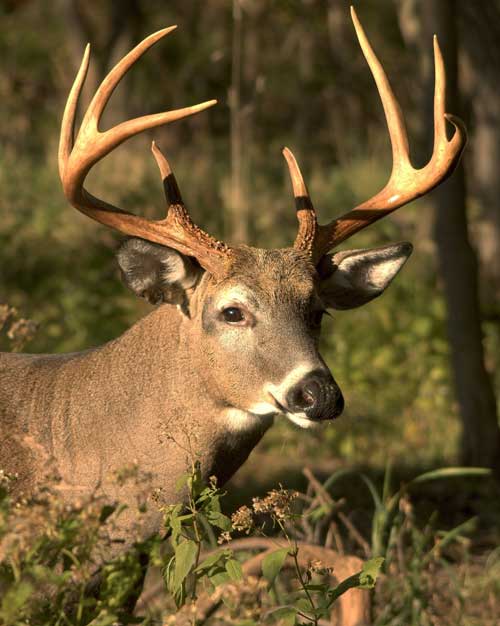
There are plenty of world records that would be relatively easy to break if you are determined enough. For example, if you can peel and eat three oranges in less than a minute or eat more than 12 hamburgers in under three minutes, then the Guinness World Records will certify you a global champion—but what about killing a world-record-sized whitetail?
Whitetail deer are one of the most widespread and commonly hunted species of big game in North America, with a range that encompasses most of the continental United States, Canada, and some parts of Mexico. The biggest whitetails are typically found in Canada and in parts of the Midwest, such as Illinois, Indiana, Iowa, Missouri, and Ohio.
However, of the millions of whitetail bucks killed by hunters each season, only a handful meet the qualifications for the record books of some of the most well-known hunting and conservation clubs—such as Boone & Crockett, Pope & Young, and Safari Club International (SCI). Of the whitetails that meet those qualifications, only a very few have the chance of qualifying for the world record.
 So, just how high is the bar set? Here are the top-five biggest whitetails ever killed:
So, just how high is the bar set? Here are the top-five biggest whitetails ever killed:
5. Tony Fulton
Score: 295 6/8
On January 5, 1995, Tony Fulton made a trip out to a small piece of family property located in Winston County, Mississippi, at the encouragement of his wife. As he sat still and quiet in the stand, he noticed a doe approaching and was excited—that is until he saw the massive buck trailing behind her. Tony pulled the trigger and, only after trailing the buck, did he realize its actual size. At 295 6/8 inches, this 48-point giant became one of the biggest whitetails ever killed and is the fifth largest on this list.
4. Jerry D. Bryant
Score: 304, ⅜
Jerry D. Bryant of Fulton County, Illinois, originally set out to kill his first wild turkey using a crossbow on November 15, 2001. Instead, he ended up killing a record-sized buck at 15 yards away. At 304 ⅜ inches, Jerry’s 37-pointer broke the record for the largest buck ever killed in Illinois at the time. Jerry kept news of his buck quiet at first, wanting to avoid the impact of too many hunters flocking to his favorite hunting grounds.
3. Timothy J. Beck
Score: 305 ⅞
One of the largest whitetail bucks scored in recent history was killed by Timothy J. Beck of Huntington County, Indiana, on November 17th of 2012—the first day of deer hunting season that year. At 305 ⅞ inches, this 37-point buck is the Indiana state-record and third largest to ever be killed.
2. Tony W. Lovsteun
Score: 307 ⅝
In 2003, Tony Lovsteun—only 15-years-old at the time—went on a special youth hunting trip with his father in Monroe County, Iowa, and killed what was considered the biggest whitetail ever at the time. This monster buck was already well-known in the hunting world. In fact, Tony’s father, Doug, had actually grazed the buck’s shoulder in a previous season. Months later, trail camera photos showed proof that the buck was still alive and well. At a score of 307 ⅝ inches, Tony’s buck made headlines across the nation in various outdoor and conservation media outlets.
1. Stephen Tucker
Score: 312 ⅜
For more than a decade, Tony Lovstuen’s massive whitetail buck stood at the top of the record books. That was until the record for the biggest whitetail ever killed was taken in 2016. Stephen Tucker, who was 27-years-old at the time and who had grown up hunting on his family’s farm in rural Tennessee, was completely oblivious to the oversized buck that was roaming the property. On November 7, Stephen killed the enormous 47-point buck that later crushed the existing record with a score of 312 ⅜ inches.
 How to Score a Whitetail Buck
How to Score a Whitetail Buck
Boone & Crockett, Pope & Young, and Safari Club International all use similar methods for scoring whitetails, but there are some differences. Whitetail bucks are typically scored using a method that includes taking measurements of the various characteristics of the antlers, such as the length at each point, the length, width, and circumference of the main beams, and the width of the entire antler rack. Simply follow these steps to calculate the score for your buck:
Step 1: Measure the main beams of the buck’s antlers—Starting from the base of the burr, measure the outside edge of each antler all the way to the tip. Record the measurements for both antlers.
Step 2: Measure the inside spread—Taken perpendicular to the center of the skull, this measurement will be the greatest distance between the main beams. Record the inside spread measurement (also called “spread credit”).
Step 3: Measure the tines—Using a pencil, mark a horizontal line where the main beam would be on the antler point and measure from that line to the tip of each tine. Each tine measurement should be recorded with a “G” (in other words, G1, G2, G3, and so on).
Step 4: Measure the circumference—Next, measure the smallest circumference between the burr and the first point, the smallest circumference between the first point and the second point, and so on until you’ve recorded four measurements for each side of the antlers.
Step 5: Measure any abnormal points—Abnormal points will count toward the gross score of the antlers, but they will be deducted from the total score to reach the net score.
Step 6: Calculate your score—Add up the measurements you recorded to calculate the gross score of your buck. You can also download a worksheet from Boone & Crockett that can help you calculate your buck’s score.

 How to Score a Whitetail Buck
How to Score a Whitetail Buck




























